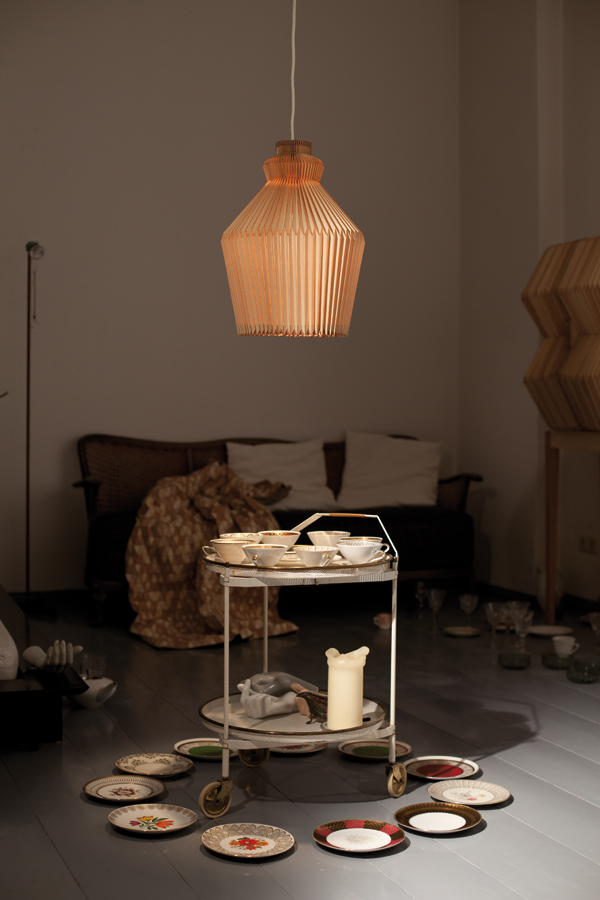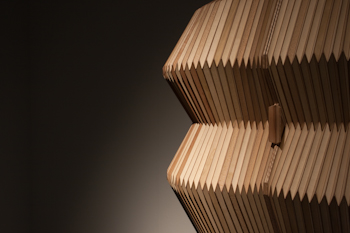PLEASE CLICK ON THE PICTURE TO OPEN HIGH-RESOLUTION VERSION
THE PICTURES ARE PROPERTY OF THE DESIGNER, THE PHOTOGRAPHER SHOULD BE CREDITED, THANKS
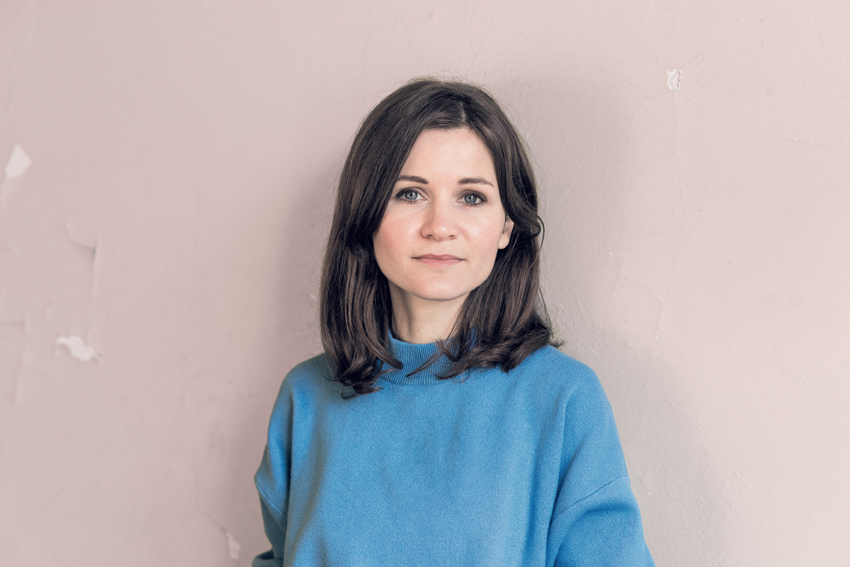
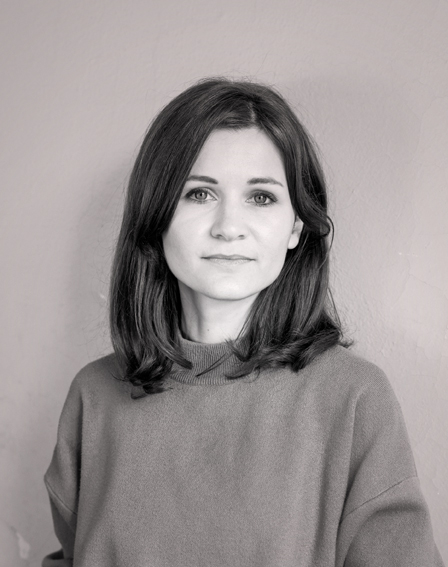
about ELISA STROZYK:
*born 1982 in Berlin
EDUCATION:
2007-2009: MA Future Textile Design at Central Saint Martins London
2007: Diploma in Textile and Surface Design at KHB Berlin
2006: Study at ENSAD in Paris
AWARDS:
2011: " Bavarian State Prize" for Design
2010: "German Design price" in the category "Newcomer"
2010: "Marc Charras Award"
photo by Lars Krüger / LUMIVERE.COM
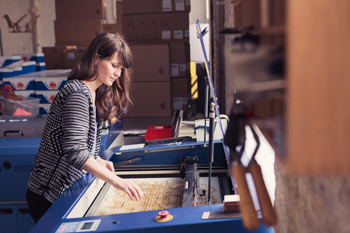
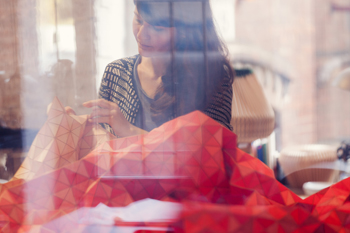
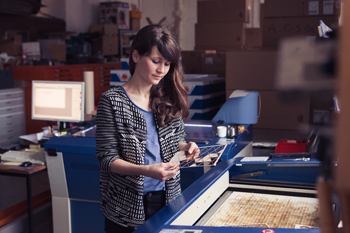
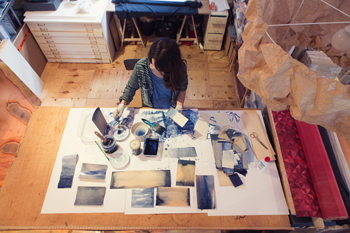
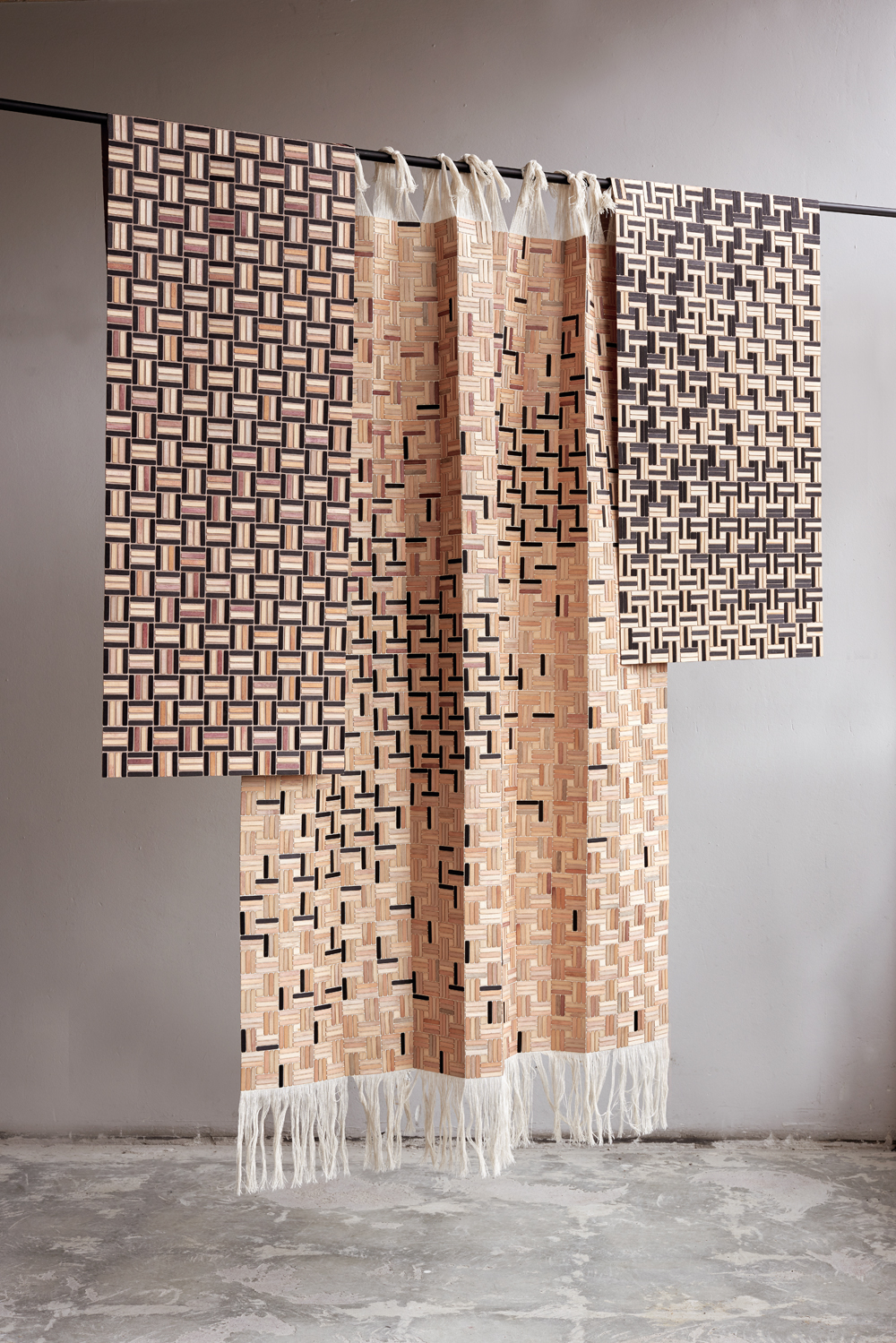
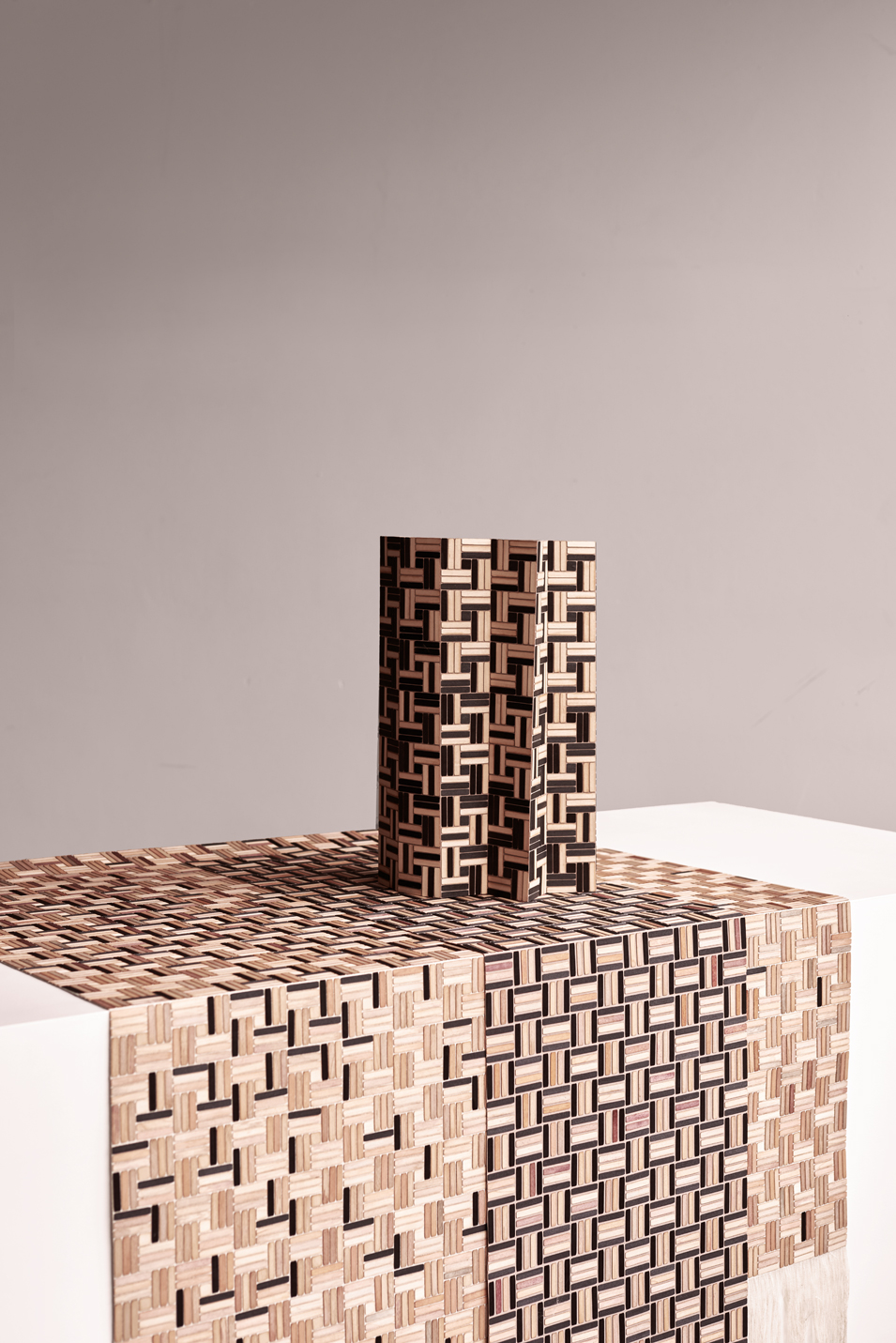
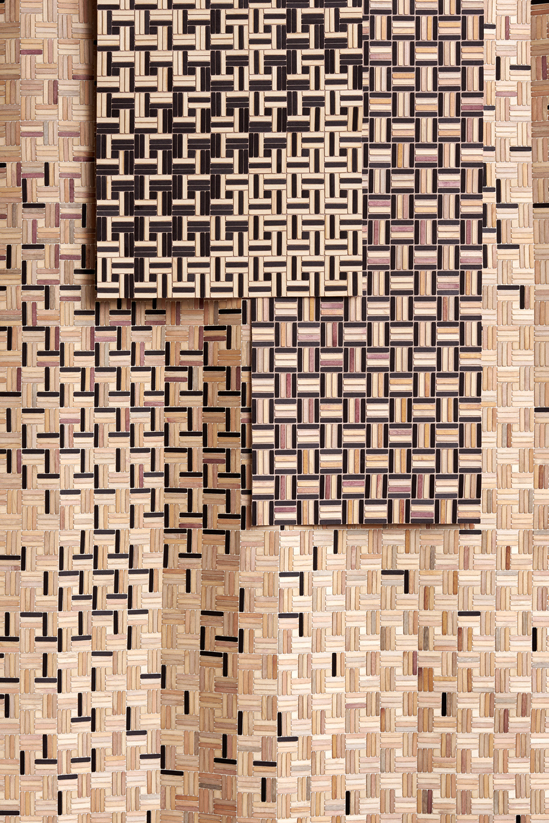
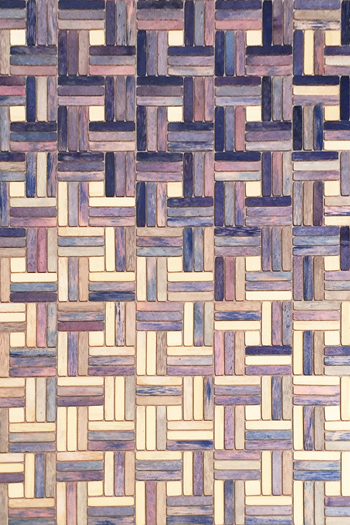
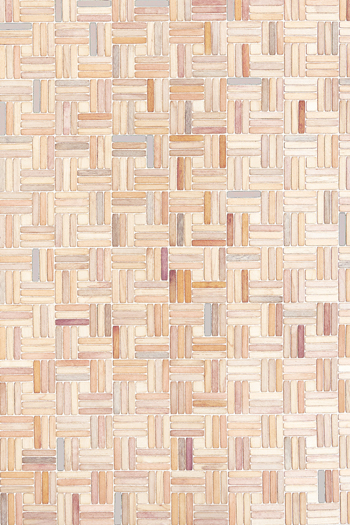
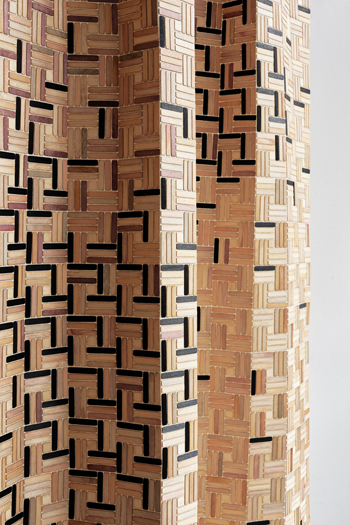
D Y E D - W O O D E N - T E X T I L E S
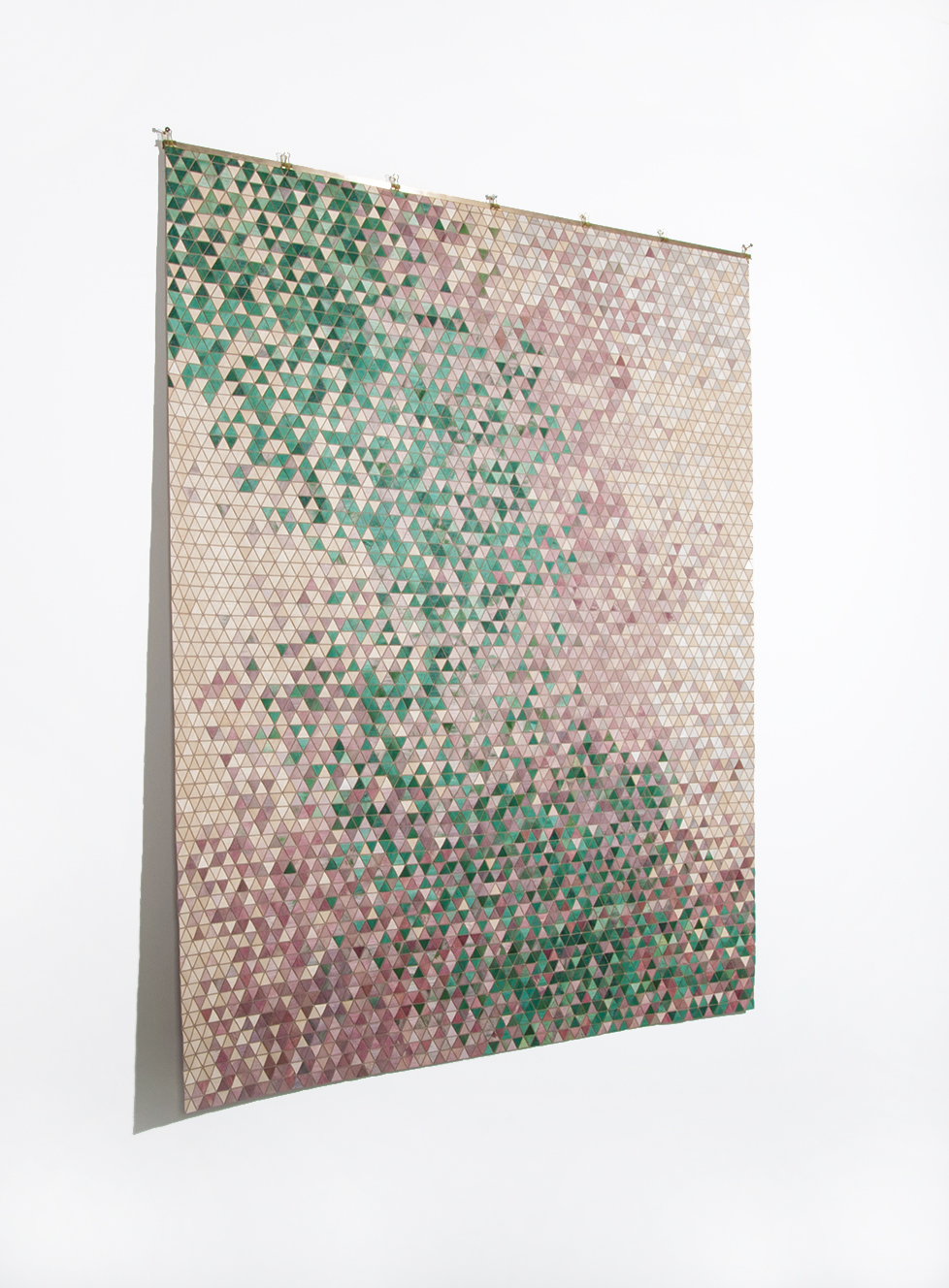
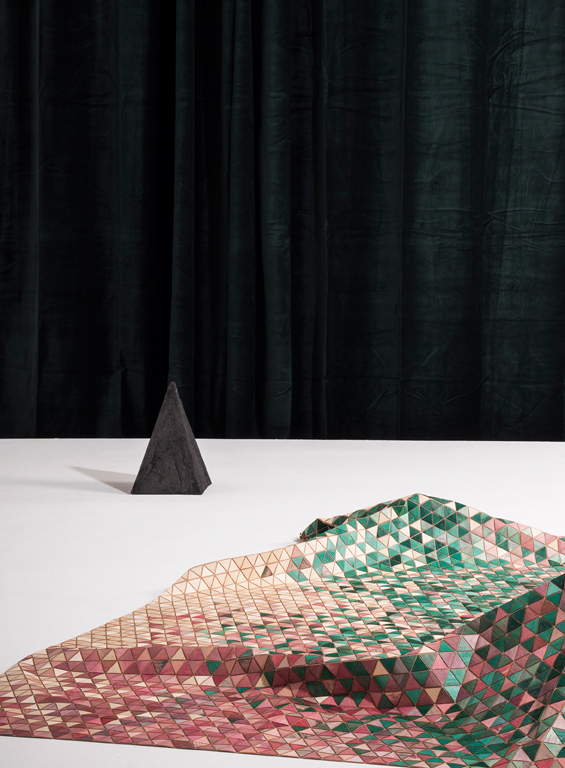
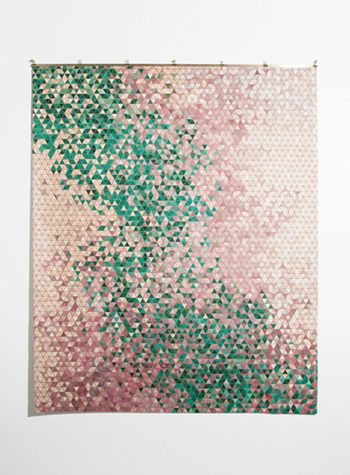
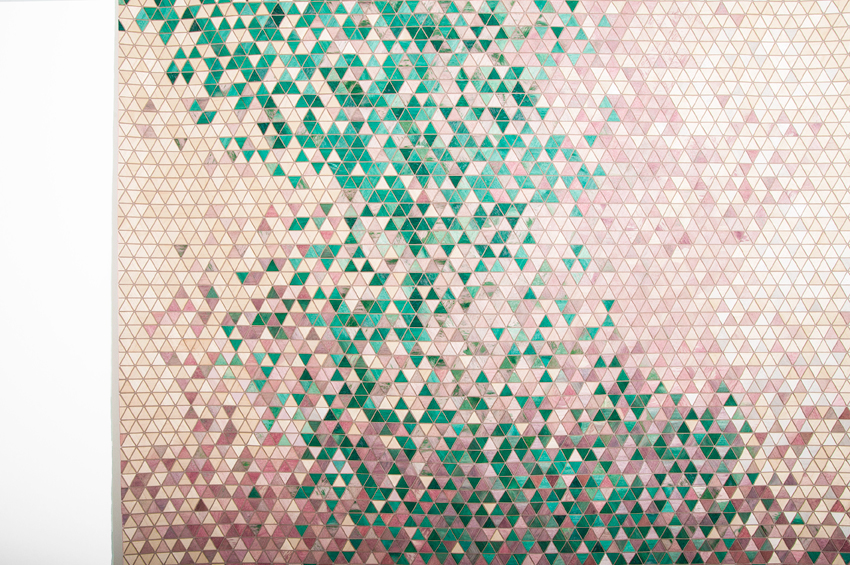
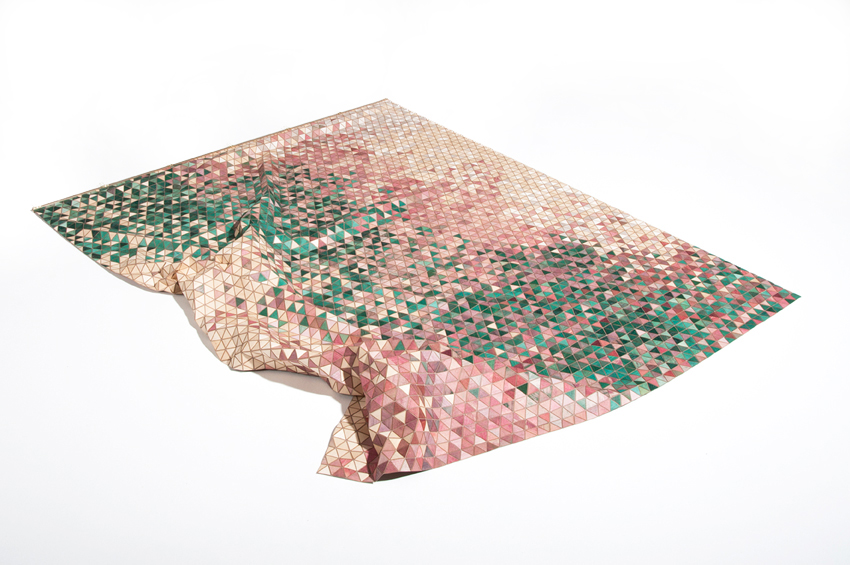
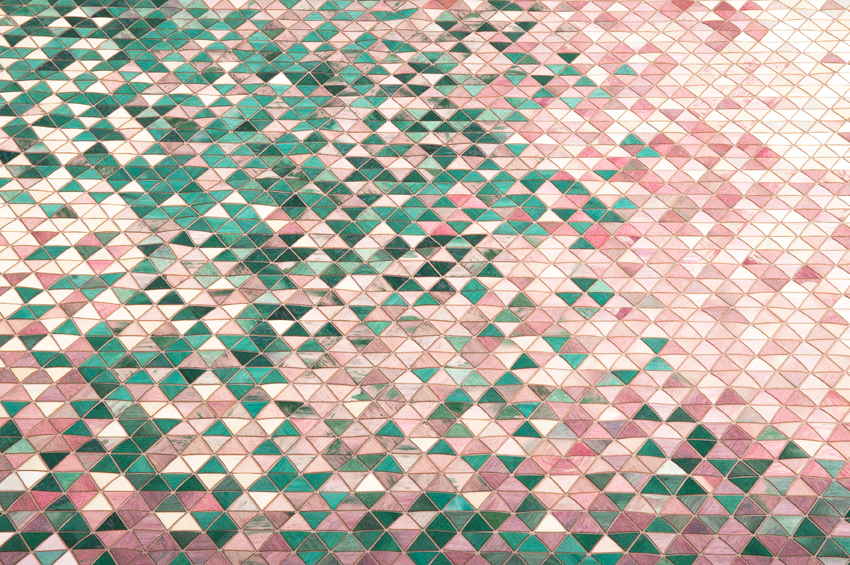
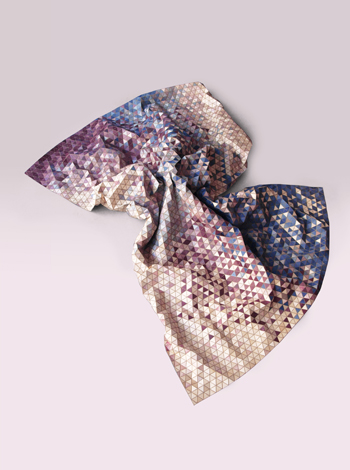
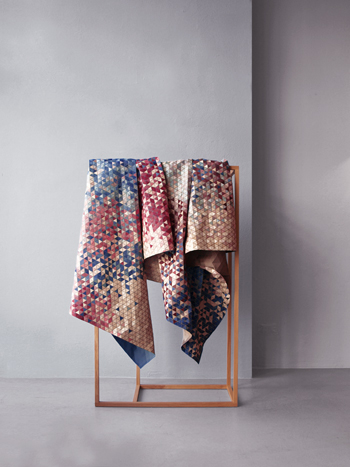
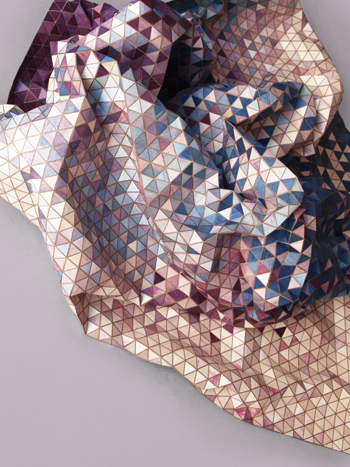
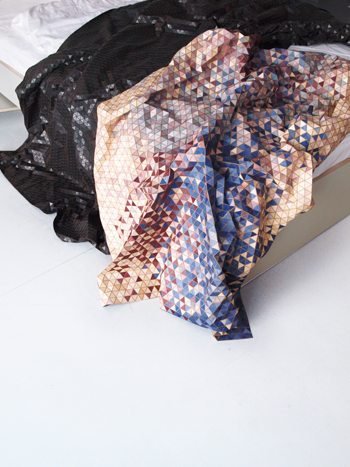
" D Y E D - W O O D E N - T E X T I L E S "
W A L L - H A N G I N G S / P L A I D S
materials: wood (dyed maple wood) , textile (cotton)
size: 120 cm x 160 cm
available in different colours. each piece is unique
PHOTOS BY STUDIO BEEN
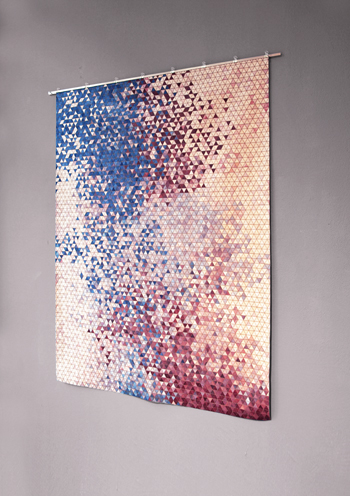
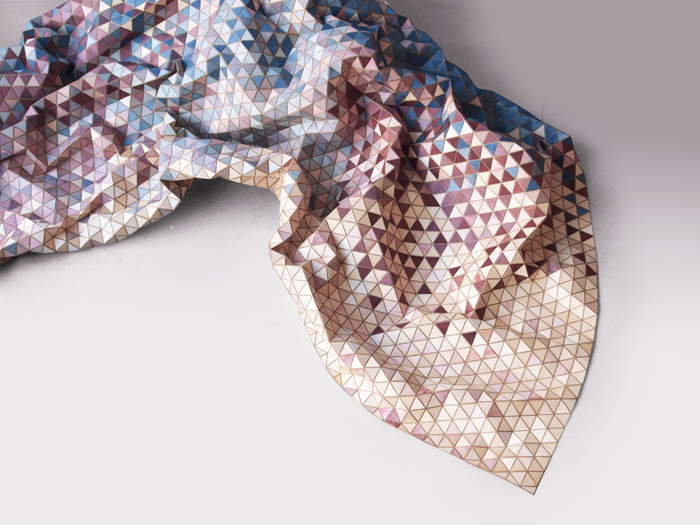
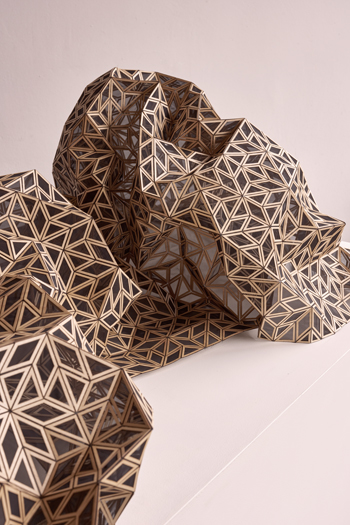
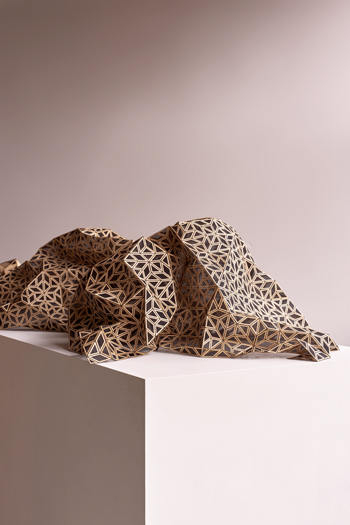
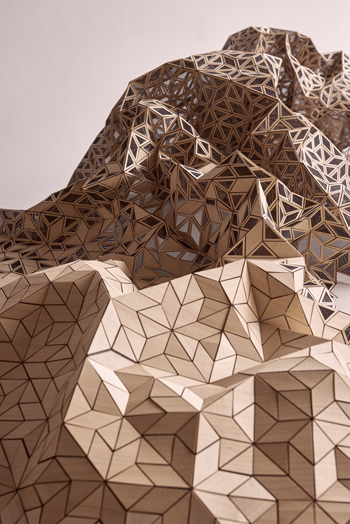
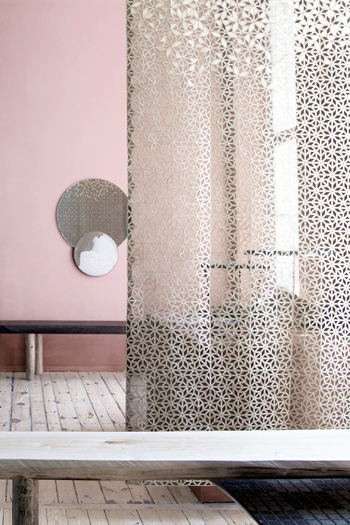

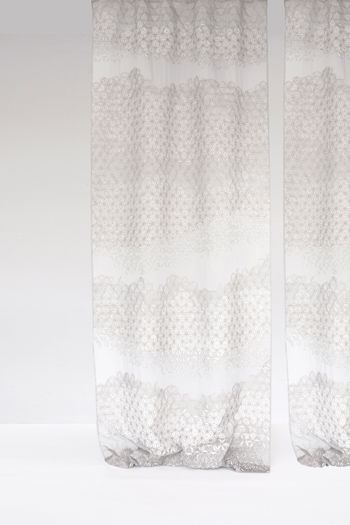
WOODEN TEXTILES
The world around us is becoming increasingly immaterial. We are now used to write emails instead of letters, to pay online, to download music and touch virtual buttons on touch screens. We live in a society of images, a visual culture full of colours, advertisements, television and the internet. There is not much left to feel. Giving importance to surfaces that are desirable to touch can reconnect us with the material world and enhance the emotional value of an object.
"Wooden Textiles" convey a new tactile experience. We are used to experience wood as a hard material; we know the feeling of walking across wooden floors, to touch a wooden tabletop or to feel the bark of a tree. But we usually don't experience a wooden surface which can be manipulated by touch.
From the perspective of a textile designer, Elisa Strozyk is researching ways to provide wood with textile properties in testing methods to make wood flexible and soft, or interweave textile elements. The outcome is a material that is half wood-half textile, between hard and soft, challenging what can be expected from a material or category. It looks and smells familiar but feels strange, as it is able to move and form in unexpected ways.
The processes to design a flexible wooden surface are its deconstruction into pieces, which are then attached to a textile base.
Depending on the weight and stiffness each surface shows a different behaviour.
The wood is cut by laser cut, and all tiles are stuck by hand to compose a textile-like surface.
"Wooden Textiles" is an approach to responsible thinking concerning lifecycles of products.
In the future we will have to deal with more waste and less resources. Therefore it is fundamental to be aware about lifecycles of objects. For me that means to use material that is able to grow old beautifully. Another way to save resources is working with reused or recycled objects and material waste.
Also it is crucial to aim for a closer relationship between subject and object. This can be achieved through more flexibility and changeability, the possibility of growth or surprising elements.
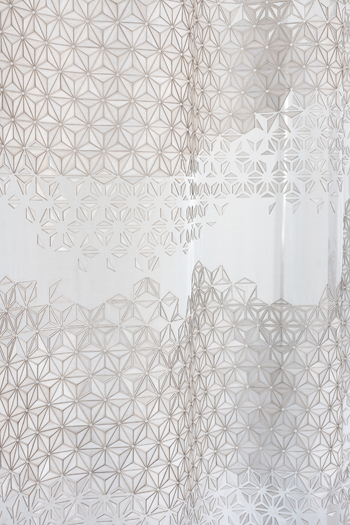
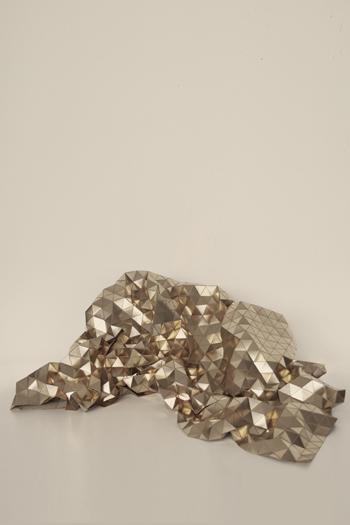
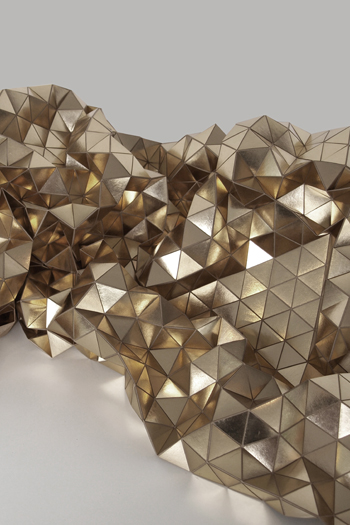
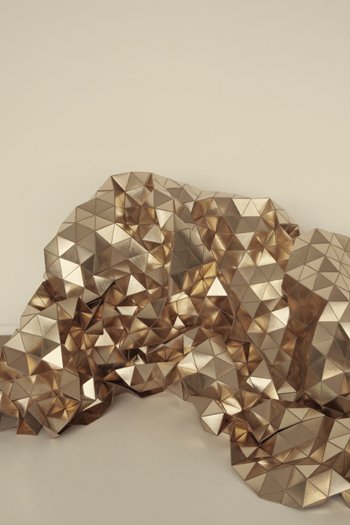
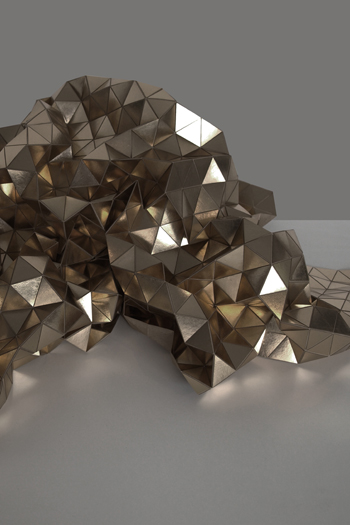
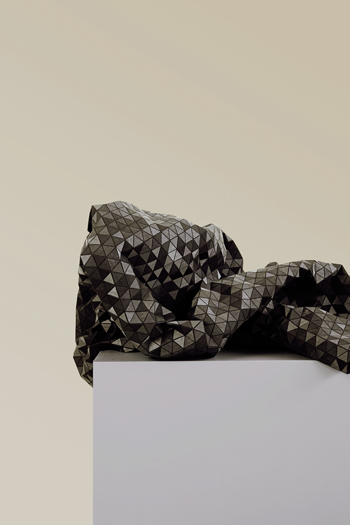
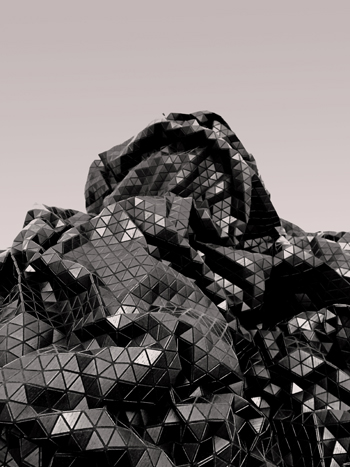
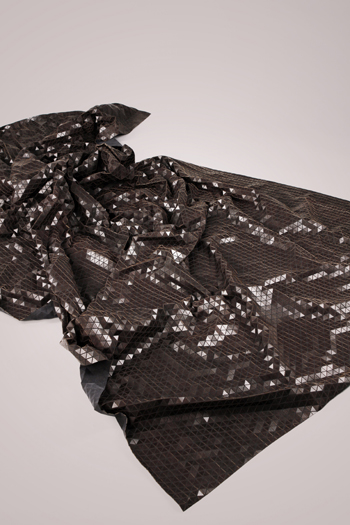
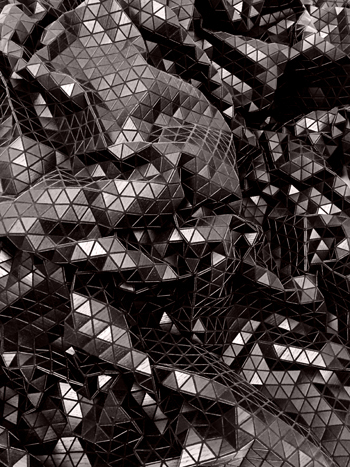
W O O D E N - T E X T I L E S / N A T U R A L
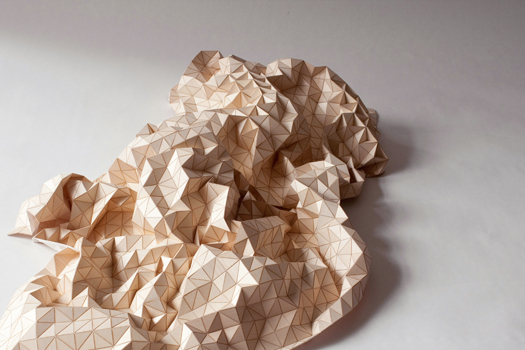

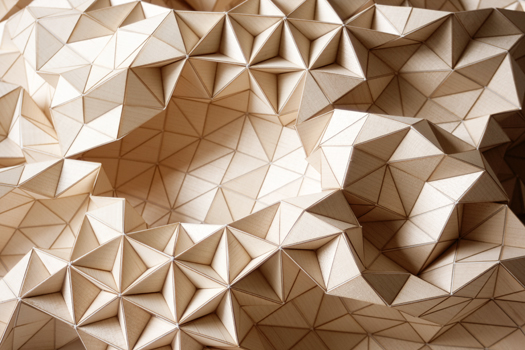
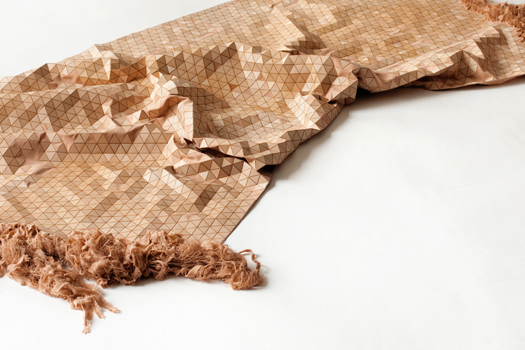
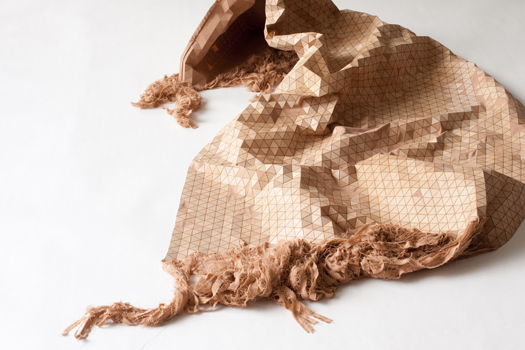
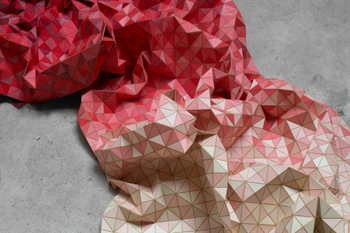
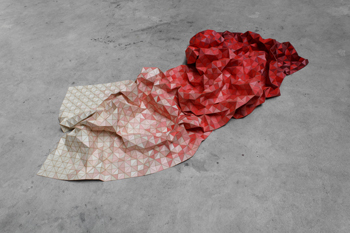
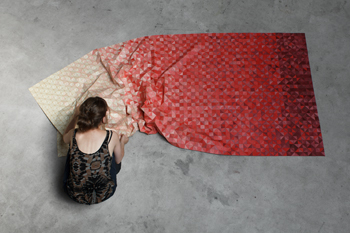
" wooden textile : F A D I N G - R E D "
size: 130 cm x 250 cm
material: wood (maple, dyed ) , textile (cotton)
photos by "Studio Been"
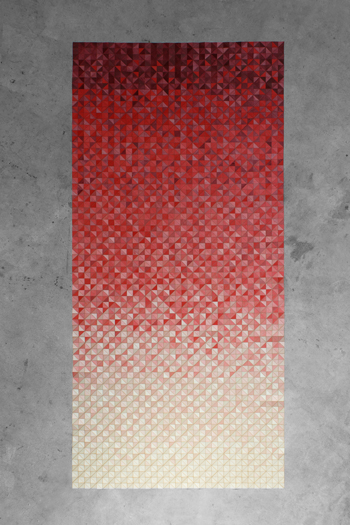
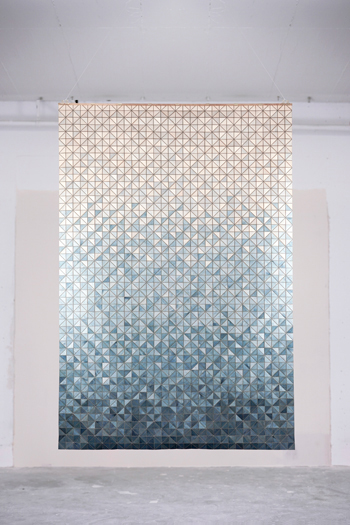
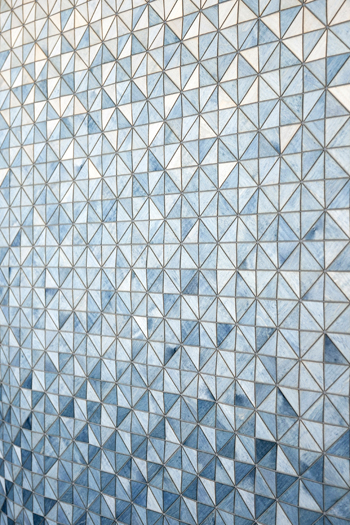
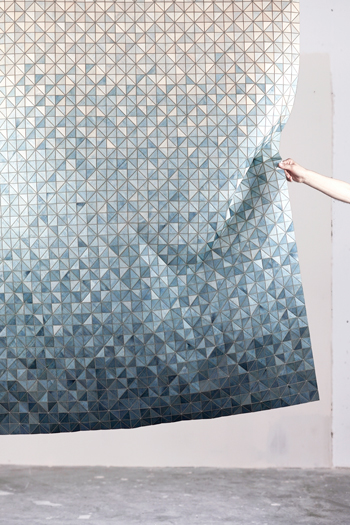
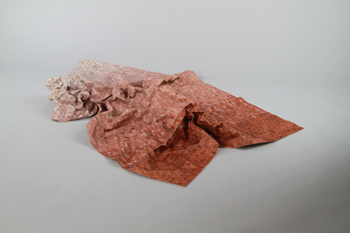
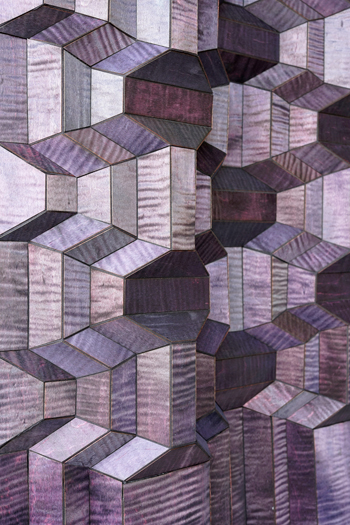
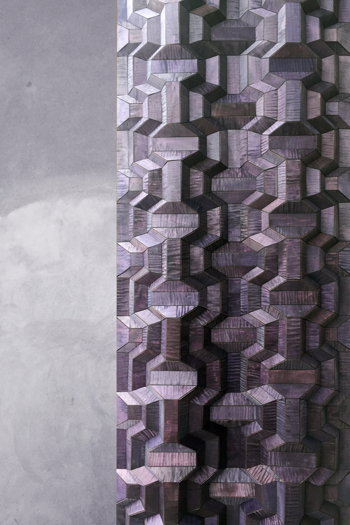
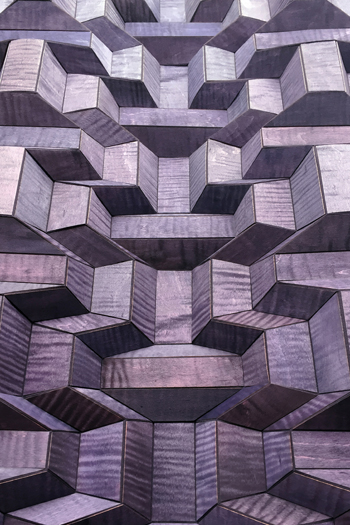
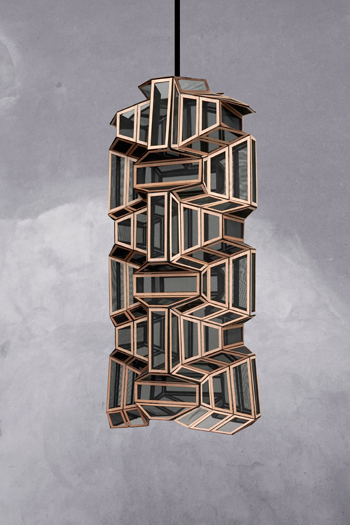
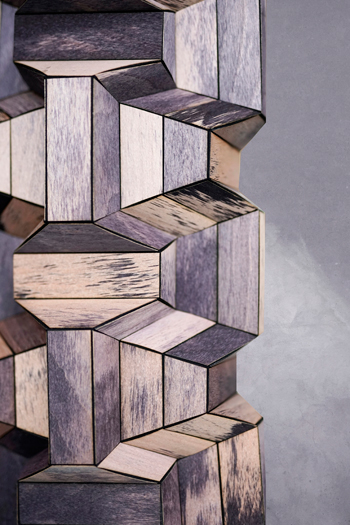
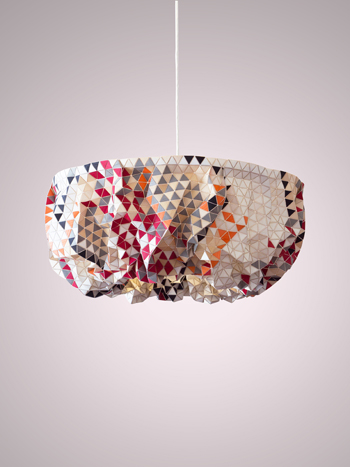
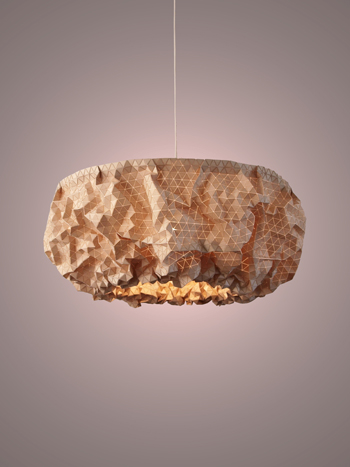
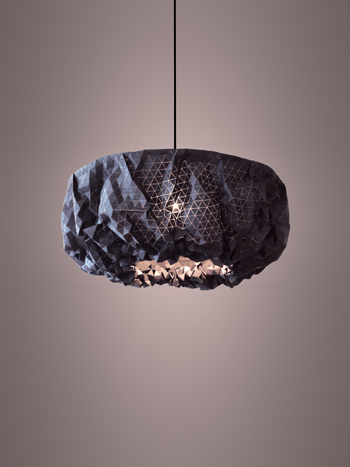
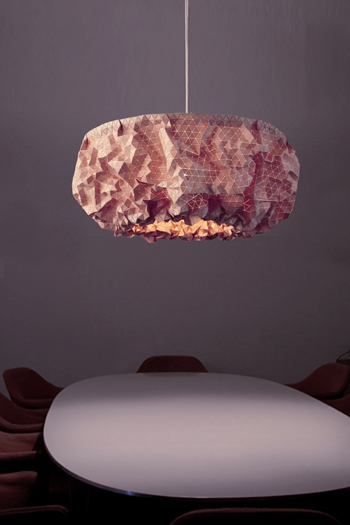
MISS MAPLE
pendant lamp, 85 x 85 x 35 cm
material: wooden textile, steel
The pendant lamp "Miss Maple" is showing the use of a familiar material in an unconventional way. We usually experience wood as a plain surface, but here it is broken down into a grid of triangles. This makes a flexible lampshade which can be transformed manually in three-dimensional ways.
While the lamp generates warm light at night the surface outside becomes more evident with daylight and turns the lamp into sculptural object.
C E R A M I C - S U R F A C E - R E F L E C T I O N S
PHOTOS BY STUDIO BEEN
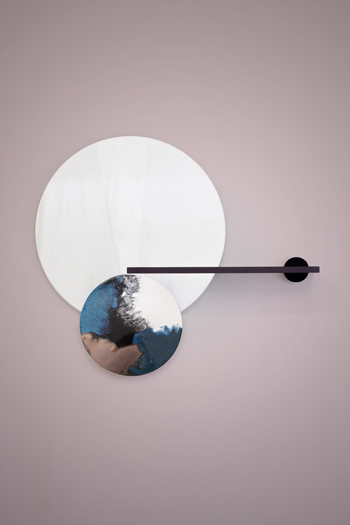
CONCEPT:
Glazing clay is one of the oldest techniques to decorate products of everyday life. I developed a specific process to apply the glazes.
The process of firing transforms the liquid suspension of metal oxides and powdered minerals into various glass-like surface-finishes.
For the"ceramic-surfaces" different liquid glazes pool and mix together under the influence of rotation and blown air to leave traces of fluid movement and smoke-like patterns which are solidified in the heat of the kiln.
The finished surfaces show traces of gravitiy, colours flow and collide.
In this project the theme is that a fluid material becomes rigid, the movement of liquids are 'frozen in time'. In this sense the surface functions as still frame in a therefore moving strain of actions.
It can be understood as an allegory of a personal archive of memories individually preserved through the remembrance of tiny variations and imperfections, bubbles and cracks in the surface.
During the process of glazing the liquid suspenses float and mix together, they form little branches, bubbles, swirls, channels and islands. The patterns resemble satellite pictures of our earth, showing meandering rivers and snow covered mountains tops. Each pattern is an unique landscape, naturally grown out of human control.
The project results in a range of objects, where the ceramic surfaces merge with functional surfaces, which are mirrors and wooden shelves. Some are wall-objects where two round surfaces overlap and the contrasting materials are placed to each other in dialogue. Another part of the collection are standing mirrors on ceramic surfaces. The surface and it's projected image form a new pattern of symmetry, the real and unreal become one new surface.
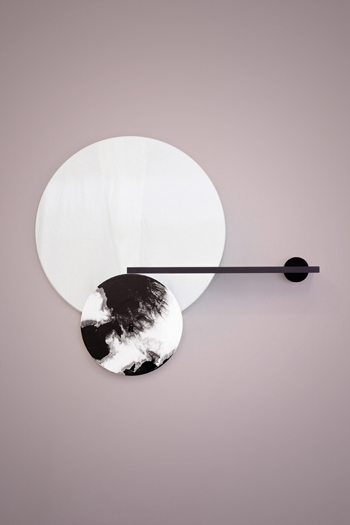
WALL-MIRROR-SHELVE
MATERIALS: CORDERIET, CERAMIC GLAZES, WOOD, MIRROR
SIZE(HxW):76cmx60cm
SIZEshelve:60cmx10cmx2cm SIZE mirror: 60 cm (Diameter) SIZE ceramic piece : 32 cm (Diameter)
PRICE 1950 EUR
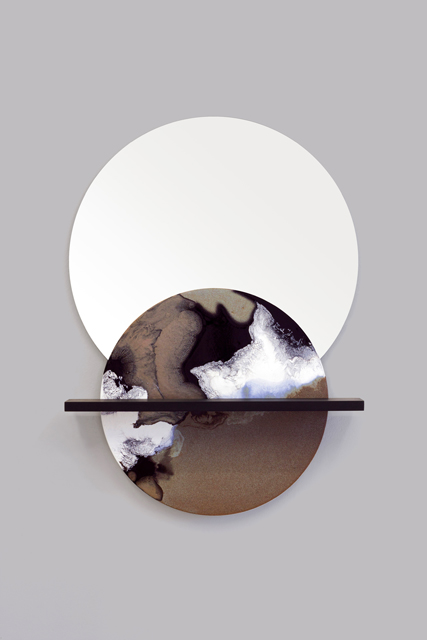
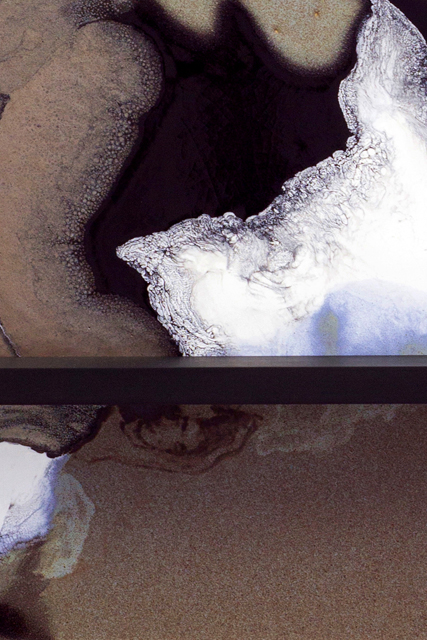
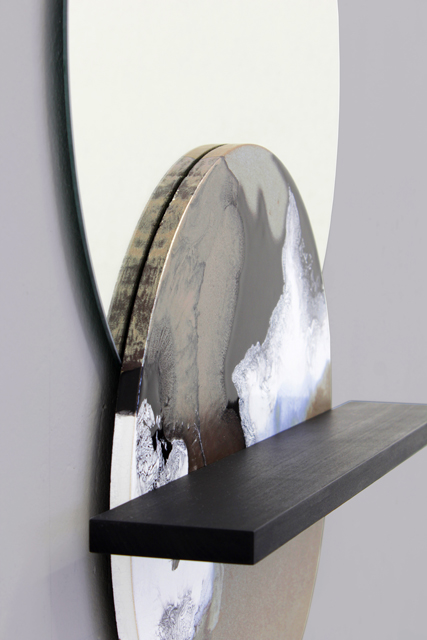
WALL-MIRROR-SHELVE
MATERIALS: CORDERIET, CERAMIC GLAZES, WOOD, MIRROR
SIZE(HxW):83cmx60cm
SIZEshelve:60cmx10cmx2cm SIZE mirror: 60 cm (Diameter) SIZE ceramic piece : 47 cm (Diameter)
PRICE: 2050 EUR
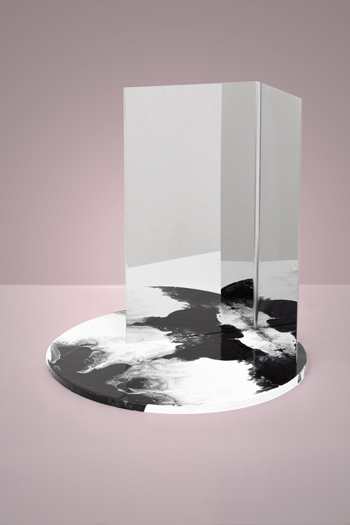


STANDING-MIRROR-OBJECT
MATERIALS: CORDERIET, CERAMIC GLAZES, POLISHED METALL
SIZE(HxW):51cmx47cm
SIZEmirror:H49cm,W18cm/26cm SIZE ceramic piece : 47 cm (Diameter)
PRICE: 1250 EUR
STANDING-MIRROR-OBJECT
MATERIALS: CORDERIET, CERAMIC GLAZES, POLISHED METALL
SIZE(HxW):26cmx38,5cm
SIZEmirror:H25cm,W22cm/22cm SIZE ceramic piece : 38,5 cm (Diameter)
PRICE: 1150 EUR
STANDING-MIRROR-OBJECT
MATERIALS: CORDERIET, CERAMIC GLAZES, WOOD, POLISHED METALL
SIZE(HxW):30cmx35cm
SIZEmirror:H29cm,W17cm/17cm SIZE ceramic piece : 35 cm (Diameter)
PRICE: 1150 EUR
for P U L P O - P R O D U C T S
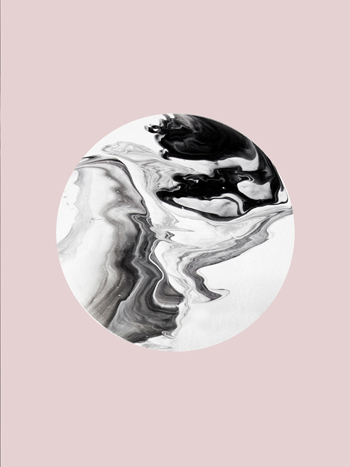
CHIARA & FOSCO
for
PULPO PRODUCTS
Elisa Strozyk designed a special edition of her ceramic-tables for Pulpo Products.
„CHIARA“ and „FOSCO“ are side-tables which are hand-crafted in a workshop in germany.
The tabletops are covered with black and white ceramic glazes which are mixed together by external processes like movements, rotation and blown air. This unique technique creates patterns of fluid movements, smoke or stone-like marbeled effects, solidified in the heat of the kiln.
The Tables are available in 3 different sizes and in 2 colour-combinations.

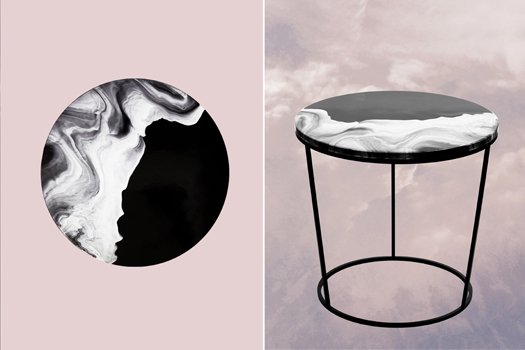


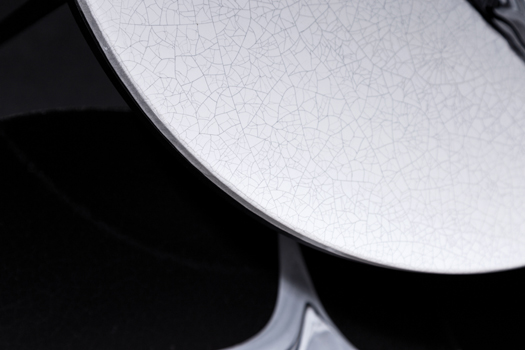


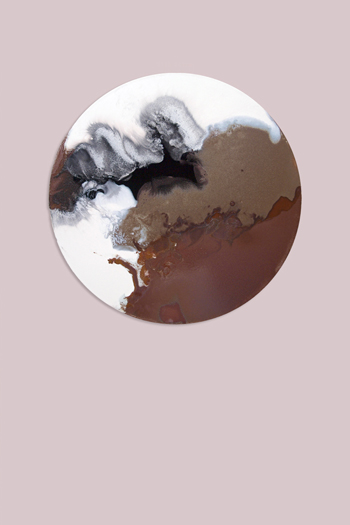
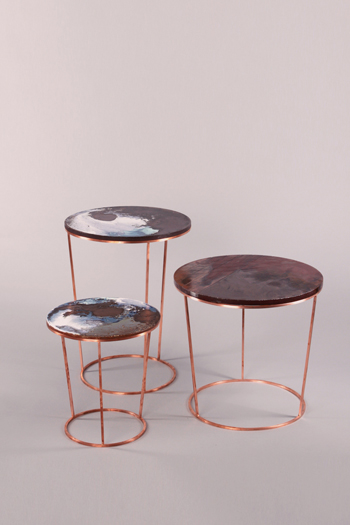
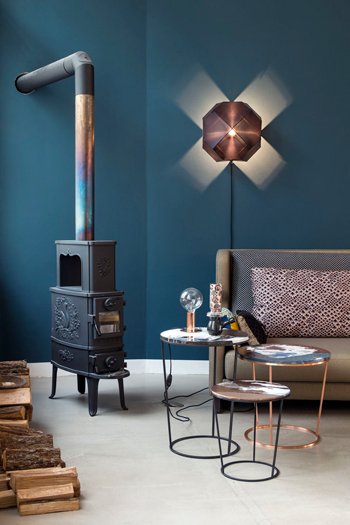
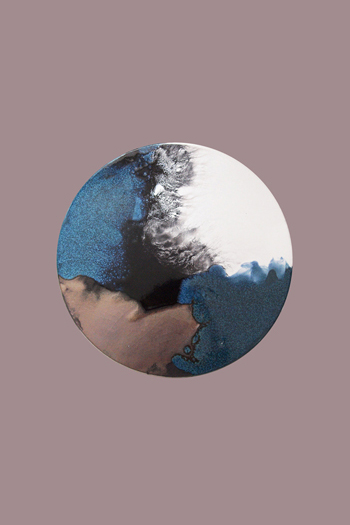
"C E R A M I C - T A B L E S"
materials: cordierite, ceramic glazes, steel / copper
Glazing clay is one of the oldest techniques to decorate products of everyday life.
The process of firing transforms the liquid suspension of metal oxides and powdered minerals
into various glass-like surface-finishes.
For the „ceramic-tables“ different liquid glazes pool and mix together under the influence of rotation and blown air
to leave traces of fluid movement and smoke-like patterns which are solidified in the heat of the kin.
The "ceramic-tables" are available in three different sizes, each tabletop is unique.
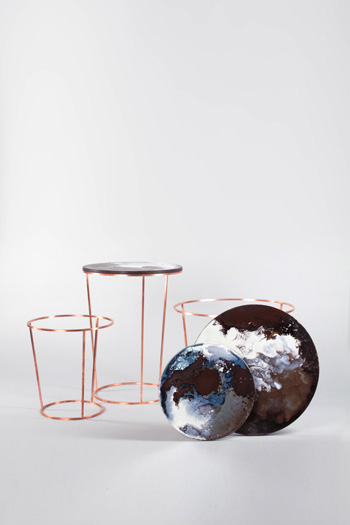
S E P T A G O N - C A B I N E T
in collaboration with SEBASTIAN NEEB
PHOTOS BY STUDIO BEEN
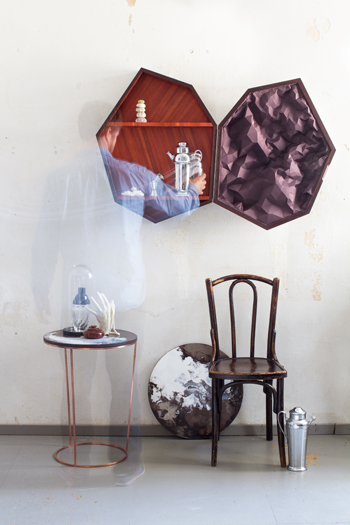
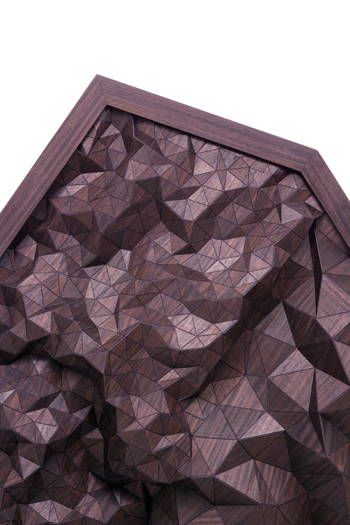
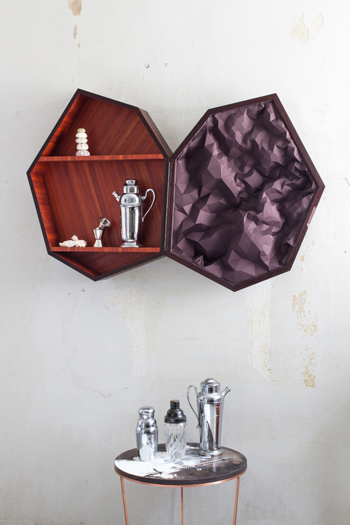
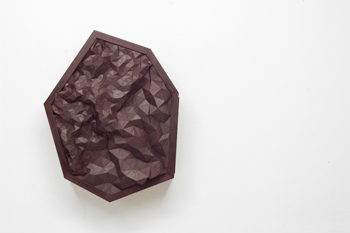
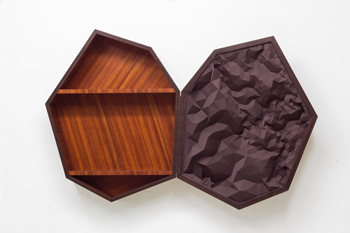
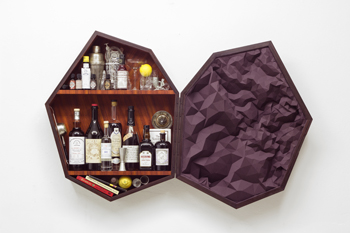
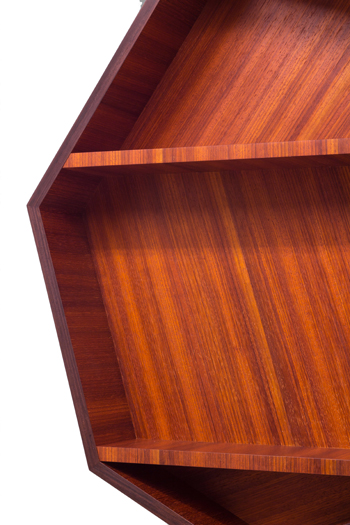
by Elisa Strozyk & Sebastian Neeb
materials: wood: beech, palisander, padouk
textile: viscose
size: 61 cm x 81 cm x 15 cm
LIMITED EDITION OF 10 PIECES
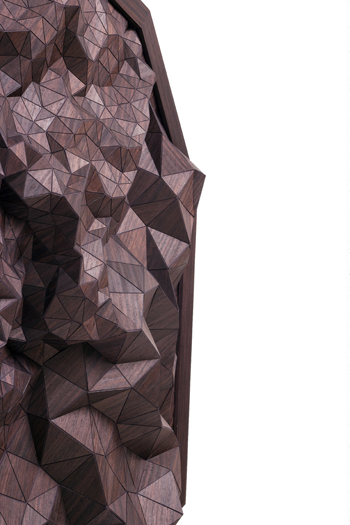
C O L O R E D - T A B L E R U N N E R S for G E S T A L T E N
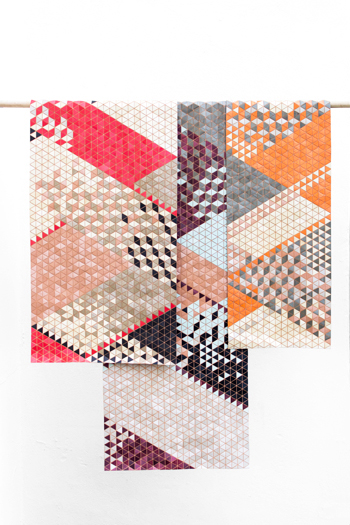
Elisa Strozyk for GESTALTEN
A collection of wooden plaids and
table-runners sold exclusively at
Gestalten Pavilion,
a new concept store at Bikini Berlin.
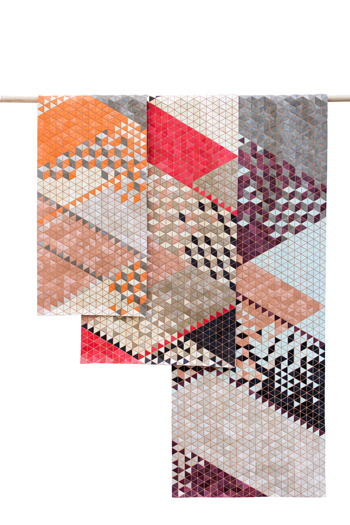
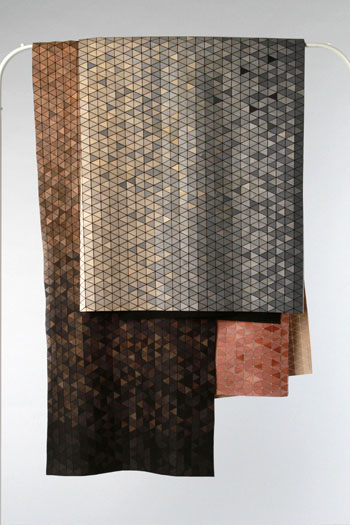
Elisa Strozyk for GESTALTEN
A collection of wooden plaids and
table-runners sold exclusively at
Gestalten Pavilion,
a new concept store at Bikini Berlin.
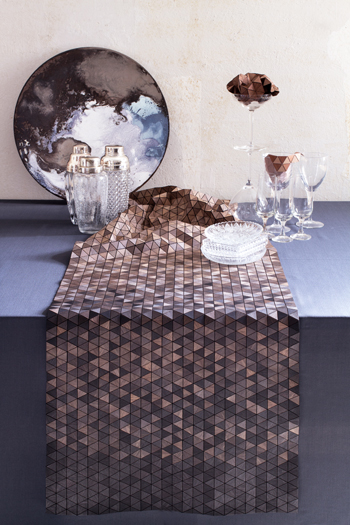
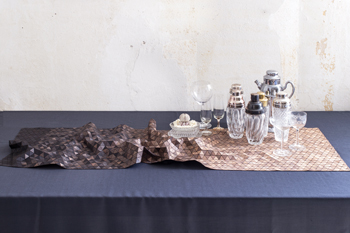
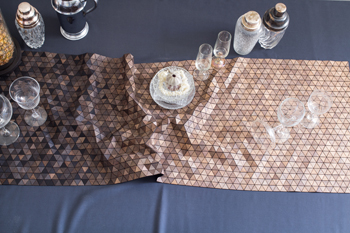
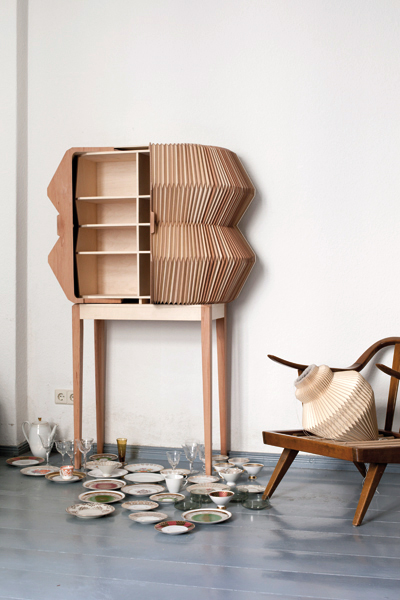
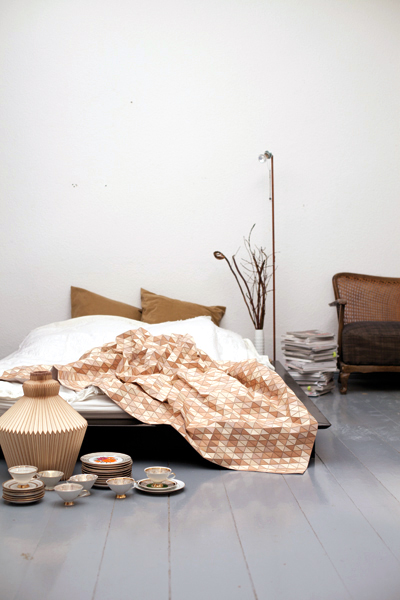
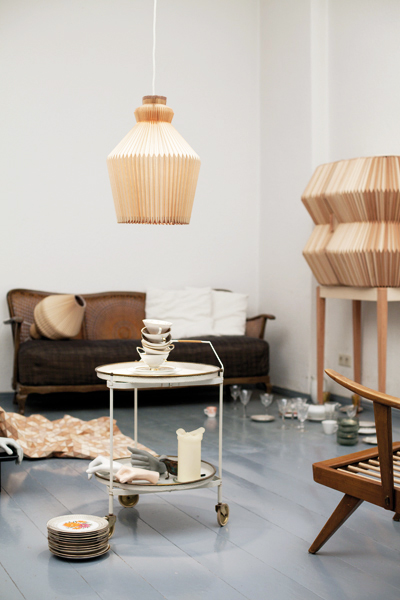
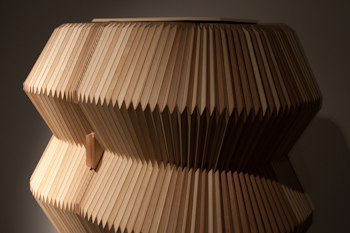
"A C C O R D I O N - C O L L E C T I O N "
by
Elisa Strozyk & Sebastian Neeb
The lights and cabinet of the "accordion collection" are the result of a collaboration between designer Elisa Strozyk and artist Sebastian Neeb.
The combination of wood and textile in an accordion-like folded surface generates a new experience of the material wood.
Using this wooden textile allows a free and sculptural form.
" Accordion Lamp "
A collaboration with artist Sebastian Neeb
around 35 x 45 x 45 cm
materials: maple wood, textile
" Accordion Cabinet"
A collaboration with artist Sebastian Neeb
158 x 100 x 43 cm
materials: mixed wood, wooden textile
